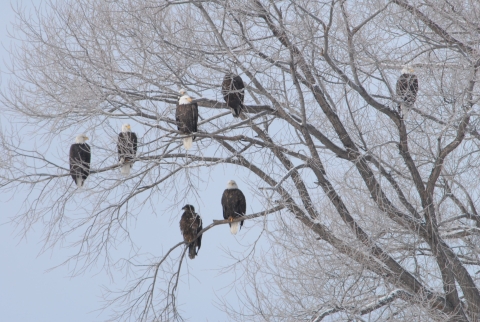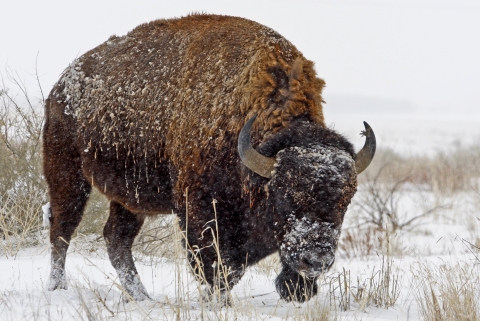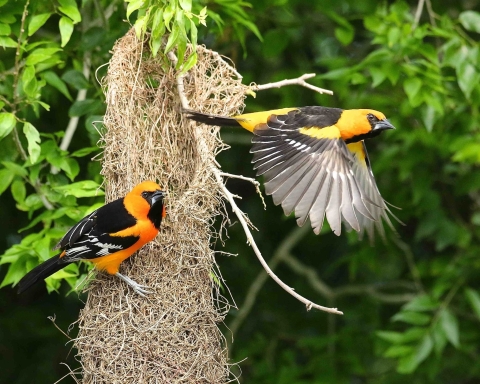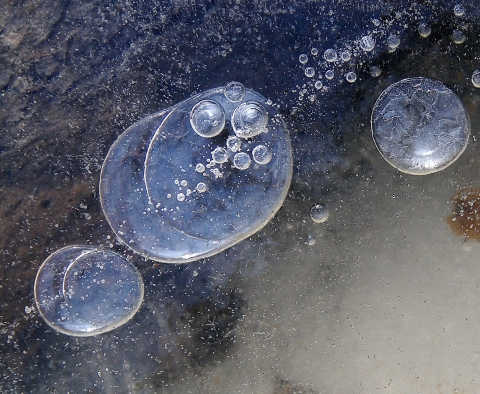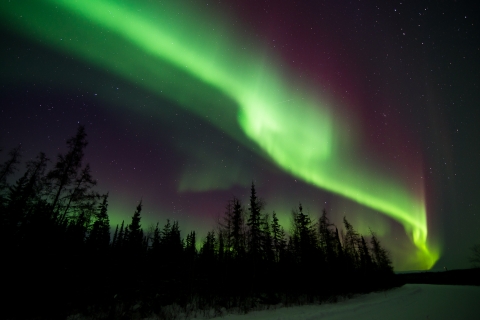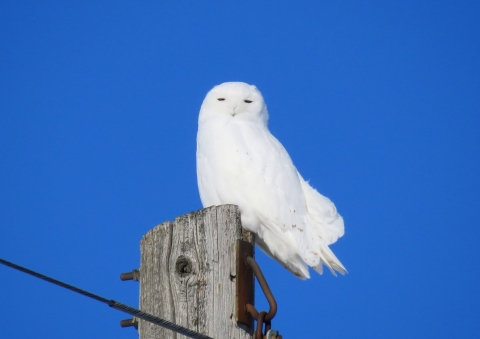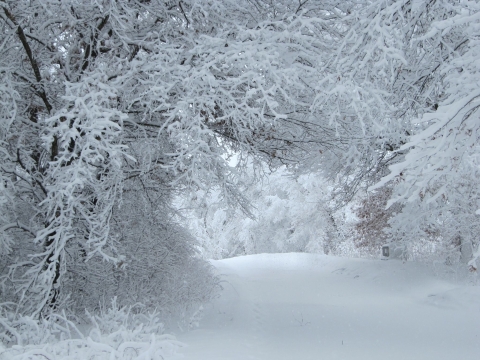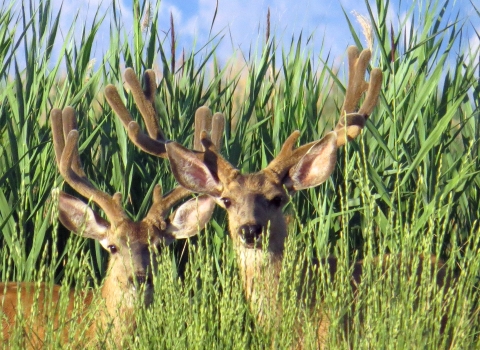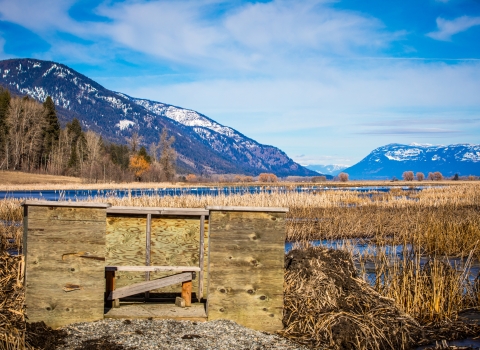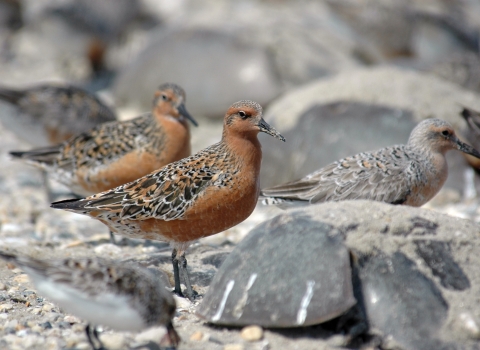Daylight is short. The air is brisk — at least in northern states. Bundle up and venture outdoors anyhow. There’s so much to see in winter at national wildlife refuges.
Eagles fish and nest. River otters come out to play. Normally hard-to-spot animals like fox and grouse stand out clearly against the snow. Should you miss them, you can often read their movements in the snow prints they leave behind. The cycle of freezing and thawing and re-freezing of ground and water surfaces leaves strange and sometimes-wondrous ice formations.
Where it’s warmer, in the South and parts of the West, great flocks of sandhill cranes and snow geese fill wintering sites such as Bosque del Apache National Wildlife Refuge in New Mexico. There they wow visitors with their dawn fly-outs to feed and their fly-ins to roost at sunset.
Find out what you can see and where this winter on national wildlife refuges.
See thousands of elk that arrive from the mountains in winter to the National Elk Refuge in Wyoming.
Catch thrilling sunrise takeoffs and sunset fly-ins of snow geese and sandhill cranes at Bosque del Apache National Wildlife Refuge, where these birds spend the winter.
Sandhill cranes take flight after sunrise at Bosque del Apache National Wildlife Refuge in New Mexico. Who goes there? Winter is a great time to find out. At cold-zone national wildlife refuges, the snow reveals secrets about the natural world. Story: “Snow Tracks”
A large-winged bird leaves its impression in the snow at Tamarac National Wildlife Refuge in Minnesota Winter is prime viewing season for bald eagles at refuges, including Lower Klamath National Wildlife Refuge in California and Oregon.
Eight bald eagles perch in one tree at Lower Klamath National Wildlife Refuge in California. Yes, eight. One is mostly obscured. Bison don’t let a little snow stop them. Bison viewing can’t be beat at places such as Rocky Mountain Arsenal National Wildlife Refuge in Colorado and Wichita Mountains Wildlife Refuge in Oklahoma.
A bison grazes in the snow at Rocky Mountain Arsenal National Wildlife Refuge outside of Denver. In south Texas, winter is the best time to see neo-tropical migrants and resident birds like Altamira orioles at Laguna Atascosa National Wildlife Refuge.
Altamira orioles at their nest at Laguna Atascosa National Wildlife Refuge in Texas Winter’s magic includes strange and wondrous ice formations on land and water surfaces.
Bubbles trapped under winter ice at Missisquoi National Wildlife Refuge in Vermont. The aurora borealis — or Northern Lights — is visible above many national wildlife refuges in Alaska.
The Northern Lights - the aurora borealis - over Koyukuk National Wildlife Refuge in Alaska. Snowy owls usually stay above the lower 48. When cold air brings them south, it’s called an “irruption.” Snowies showed up in a recent year at Edwin B. Forsythe National Wildlife Refuge in New Jersey.
A snowy owl perched on a pole. At southern refuges, see alligators bask in the sun. Winter is also high season for shorebirds and wading birds and many other colorful species.
Alligator at Jocelyn Nungaray National Wildlife Refuge in Texas. A fresh blanket of snow creates the look of a storybook winter wonderland at Trempealeau National Wildlife Refuge in Wisconsin.
Trempealeau National Wildlife Refuge in Wisconsin. In winter, Florida manatees seek shelter in the warm springs of Crystal River National Wildlife Refuge in Florida, where visitors can see these gentle creatures.
A Florida manatee at Crystal River National Wildlife Refuge.




